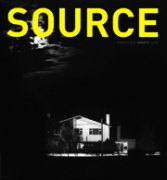Law
Privately Alone on a Bicycle
by Ronan Deazley
Issue 51 Summer 2007
View Contents ▸
Landmark moments in legal jurisprudence often come from the most unlikely sources. Recently, in Ash v. McKennitt (Dec. 2006) the Court of Appeal upheld the High Court decision of Mr Justice Eady to prevent the publication of a book on the Canadian folk singer, Loreena McKennitt, by her former friend and confidant, Neima Ash. The Court of Appeal’s decision to do so has been described as "a turning point in the development of English privacy law" (The Guardian, 16 December 2006), the deathknell for the kiss-and-tell stories that fuel the sale of the tabloid press. That in itself may prove to be of little interest to the casual Source reader, however the substance of the decision, and in particular the jurisprudence of the European Court of Human Rights (the ECtHR) which it explicitly endorses, has considerable implications for all forms of photography in the public sphere.
When considering the nature of the balance to be struck between the right to freedom of expression (enshrined in A.10 of the European Convention on Human Rights – the ECHR) and the right to respect for private and family life (ECHR, A.8), both Eady J in the High Court and Lord Justice Buxton in the Court of Appeal referred to the fact that UK jurisprudence in this area must be guided by the recent decisions of the ECtHR, and in particular that of Von Hannover v. Germany(2005). In Von Hannover, which represented the culmination of a 10-year campaign on the part of Princess Caroline of Monaco to prevent the publication of photographs concerning her private life in the tabloid press, the ECtHR confirmed that the concept of "private life" under A.8 of the ECHR extends to aspects of an individual’s personal identity, which includes both their name and image. In holding that Princess Caroline’s rights under A.8 had been infringed, the ECtHR continued that "there is a zone of interaction with others, even in a public context, which may fall within the scope of ‘private life’". About Von Hannover, Eady J observed: "The case is notable especially... for the width of the notion of ‘private life’ which the European Court of Human Rights is now prepared to recognise". In similar fashion Buxton LJ commented: "There is little doubt that Von Hannover extends the reach of article 8 beyond what had previously been understood".
To appreciate the potential impact of these various decisions it is important to keep in mind that the photographs at the centre of the Von Hannover litigation were neither salacious nor sensational; they were instead relatively banal affairs, involving shots of Princess Caroline on horseback, "alone on a bicycle", and "shopping on her own". Moreover, in reaching its decision the ECtHR listed various public activities which it considered to be of a "purely private nature", including "practising sport", being "out walking", and "leaving a restaurant". Given that in another recent decision, Sciacca v. Italy (2005), the ECtHR made it clear that the"zone of interaction" which a private individual enjoys will be larger than it would be for a public figure or a politician, one wonders whether any kind of activity in public might not fall within the sphere of protection afforded by A.8 in this regard? Is an "ordinary person" sitting in a crowd at a football match, for example, still within his or her protected "zone of interaction"? What about travelling on public transport, visiting a museum or gallery, or standing at the door of your house with a floor-brush in hand? It would seem that, unless one secures the consent of those individuals who feature in the photograph, images taken in public involving the most routine and mundane behaviour may well be deemed unpublishable within the context of this new jurisprudential landscape. As Eady J was keen to make clear: "[T]here is a significant shift taking place as between, on the one hand, freedom of expression for the media and the corresponding interest of the public to receive information, and, on the other hand, the legitimate expectation of citizens to have their private lives protected"; or in other words: Vive l’intimité!
Other articles by Ronan Deazley:





